Cataracts occur when the lens of a pet’s eye becomes opaque, obstructing light and impairing vision. This clouding can progress, leading to significant vision loss and even blindness. For many pets, particularly dogs and cats, cataract surgery is the most effective approach to restoring clear vision and enhancing their quality of life.
Dr. Gladys Boo, the only American Board-Certified Veterinary Ophthalmologist in Singapore, specialises in pet cataract surgery. Using veterinary surgical methods, The Eye Specialists for Animals aims to deliver high success rates for eye cataract surgery, with a focus on careful assessment and tailored treatment plans.
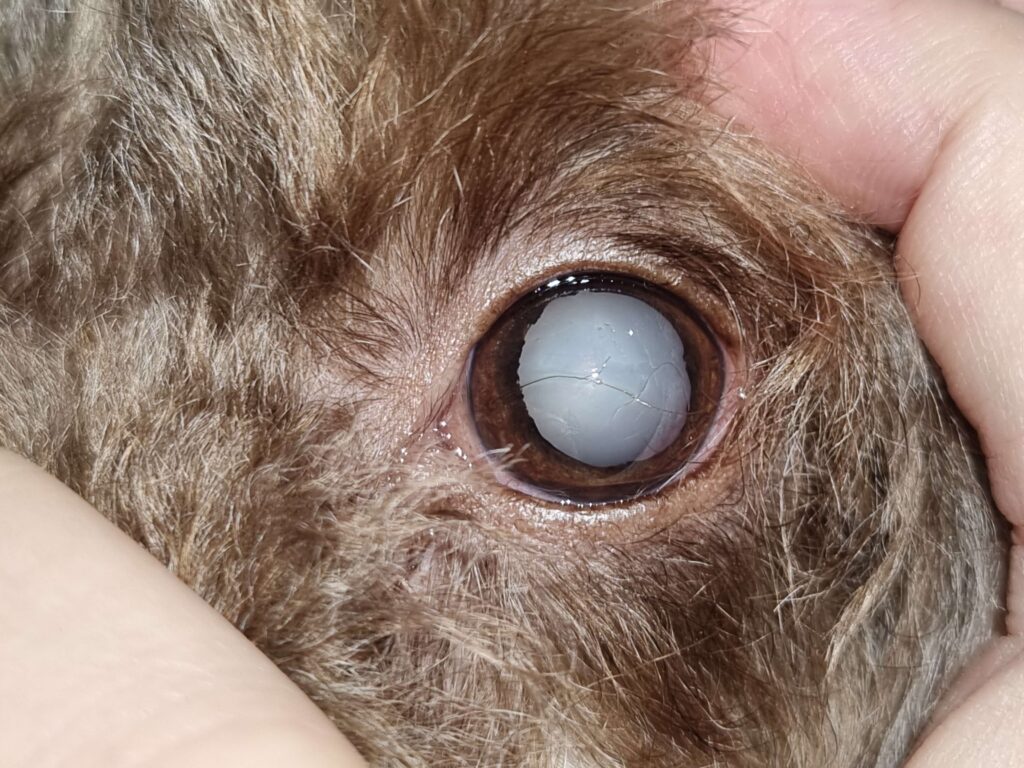
Cataracts refer to the clouding of the lens inside the eye, preventing light from reaching the retina and causing blurry vision or blindness. In dogs, genetics is a frequent cause. On the other hand, in cats, cataracts are often linked to inflammation within the eye (uveitis) or may be inherited, particularly in breeds like Himalayans and British Shorthairs. Other causes in both dogs and cats include ageing, diabetes, and eye injuries. Additionally, cataracts can vary in size—small ones may have minimal impact, while large ones can cause significant vision loss and may need surgery.
Untreated cataracts can lead to complete blindness and increase the risk of secondary conditions, such as glaucoma, which causes painful pressure within the eye. However, cataract surgery for cats and dogs may restore vision, allowing your pet to regain their ability to navigate their surroundings and enjoy a better quality of life. So, bring your pet to The Eye Specialist for Animals when you see symptoms that indicate cataract progression, including cloudy or bluish eyes, bumping into objects, difficulty seeing in dim light, and reluctance to jump or climb. This way, you can get them the treatment they need before their condition becomes worse.
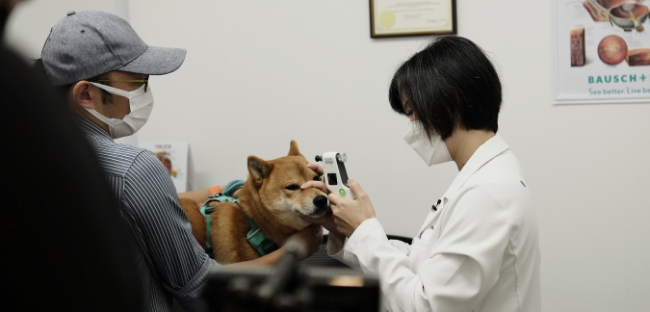
The process of pet cataract surgery involves several crucial steps to ensure the best possible outcome for your pet, and these steps can be broadly categorised into three stages:
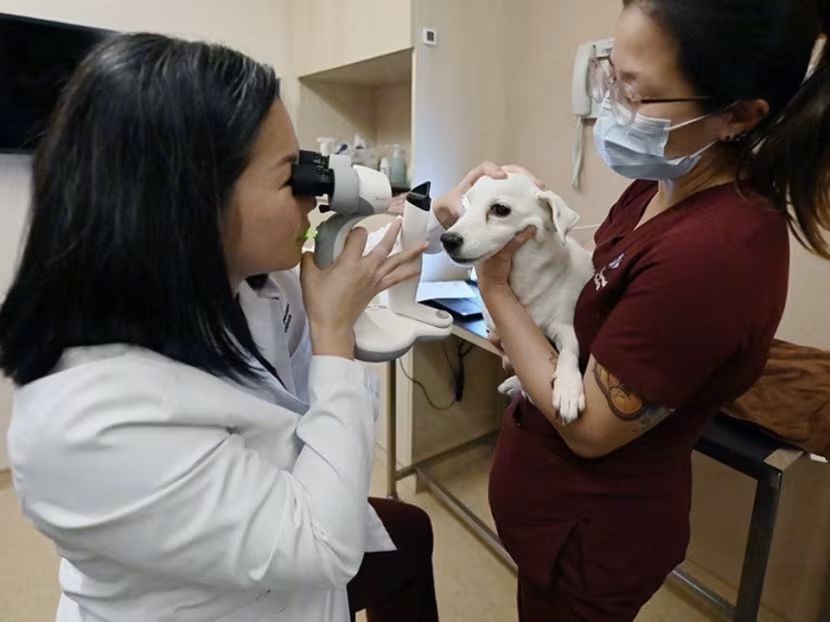
Before cataract surgery can be performed on your pet, a thorough pre-surgery evaluation is necessary. This includes a complete pet ophthalmic examination to assess the overall health of its eyes and determine the extent of the cataract. Additionally, blood tests and other diagnostic tests may be required to identify any underlying health conditions that could affect the surgery or recovery. This evaluation helps us determine if your pet is a suitable candidate for cataract surgery and to tailor the procedure to their specific needs.
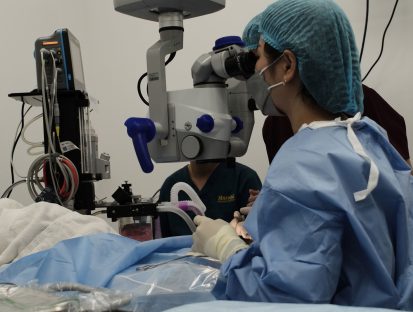
The pet cataract surgery itself involves the removal of the clouded lens from the eye, and this is typically done using an approach called phacoemulsification, where the lens is broken down using ultrasound waves and then carefully extracted. In some cases, an artificial lens may be implanted to replace the natural lens, helping to restore clear vision. It’s also worth noting that the surgical procedure requires precision and expertise. As such, it’s important to choose a qualified and experienced veterinary ophthalmologist like Dr. Boo for cataract surgery for your dog, cat, or other animals
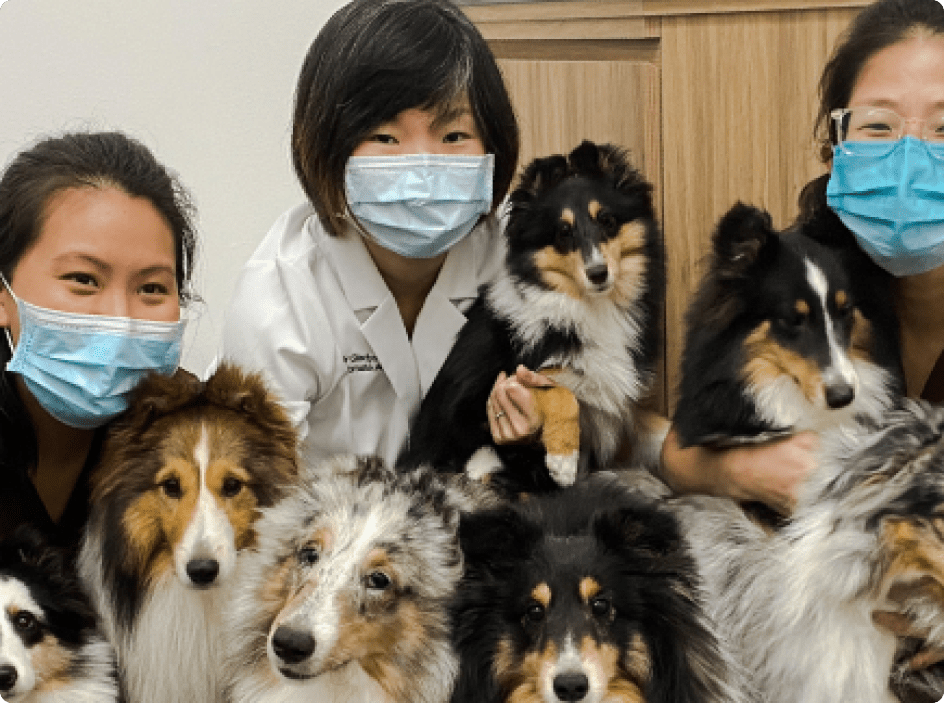
Immediately after the cataract surgery is completed, your pet will be moved to a recovery area for close monitoring as it wakes up from the anaesthesia. Here, the veterinary team will assess their vital signs and ensure they are comfortable. Once they are stable, you will be able to see your pet and receive detailed instructions for post-operative care at home. You will also schedule follow-up appointments to monitor your pet’s healing progress.
Following the cataract surgery for your dog or cat, dedicated aftercare is essential for a smooth recovery and optimal vision restoration. Also, your pet will need to wear an Elizabethan collar (e-collar) to prevent them from rubbing or scratching their eyes, which could disrupt the healing process.
The Eye Specialist for Animals will prescribe eye drops to manage inflammation and prevent infection, and you need to administer these medications to facilitate healing. Regular follow-up appointments are also necessary to monitor the healing process. With proper care and adherence to post-operative instructions, most pets experience significant vision improvement within a few weeks of their cataract surgery.
Concerned about your pet’s vision? Don’t let cataracts diminish their quality of life. Schedule a consultation with Dr. Gladys Boo, Singapore’s only American Board-Certified Veterinary Ophthalmologist, at The Eye Specialist for Animals today and determine whether your pet needs surgery.
Dr. Gladys Boo’s veterinary experience extends beyond cataract surgery for pets like dogs and cats. She also provides eye care for a variety of animals, including horses, farm and zoo animals, and exotic species. What’s more, the surgical approach and techniques may be adapted based on the specific needs and anatomy of each species.
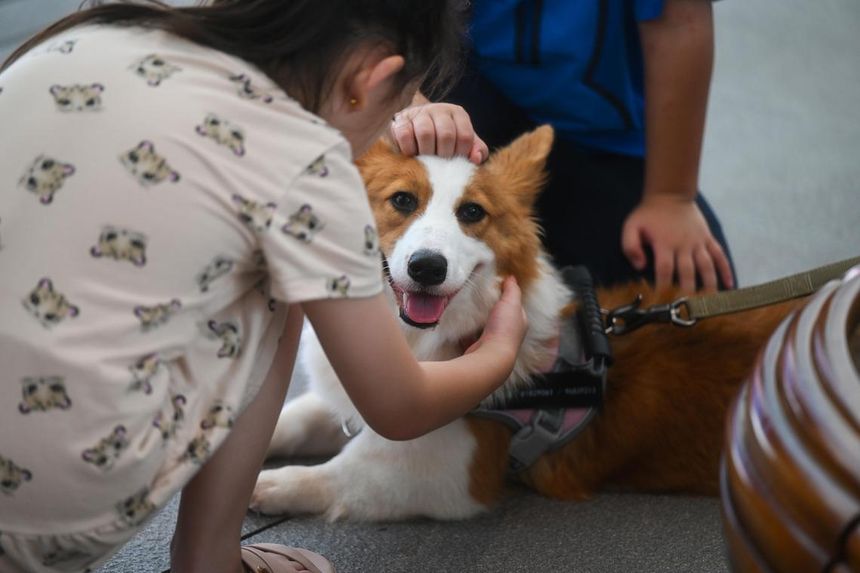
Dog cataract surgery is often performed to address hereditary cataracts, which are common in certain breeds. The surgical procedure typically involves phacoemulsification and intraocular lens (IOL) placement to restore clear vision. Post-operative care for dogs includes restricted activity and medication to prevent complications.
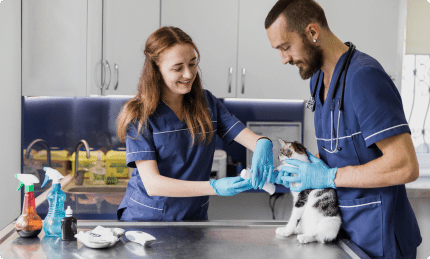
Cat cataract surgery may be necessary due to various causes, including uveitis, trauma, or inherited conditions. While the surgical approach is similar to that used in dogs, the post-operative care may differ slightly to accommodate a cat’s more independent nature and potential for scratching.
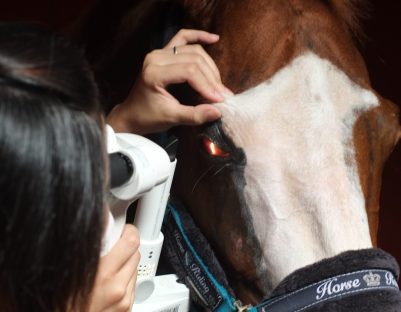
Cataract surgery in horses often addresses cataracts caused by recurring uveitis, and the procedure may involve phacoemulsification or extracapsular extraction, depending on the cataract’s characteristics. And at The Eye Specialist for Animals, we offer cataract surgery for pets like rabbits and guinea pigs, as well as exotic animals, tailoring the surgical approach to their unique needs.

While pet cataract surgery generally has a high success rate, it’s important to acknowledge potential risks and complications. For instance, post-operative inflammation is common but typically managed with medication. In rare cases, retinal detachment can occur, requiring further intervention. Glaucoma development is also possible and necessitates careful monitoring.
The Eye Specialist for Animals prioritises transparency and will discuss these risks with you in detail during the consultation, ensuring you have a clear understanding of the procedure and potential outcomes before proceeding with cataract surgery for your dog or cat.
To determine if your dog is a suitable candidate for cataract surgery, a veterinary ophthalmologist must perform a comprehensive eye examination. This assessment will evaluate the overall health of your dog’s eyes and determine if they have a reasonable chance of regaining vision after the procedure. Additional ocular diagnostic tests for pets, such as an electroretinogram (ERG) or an ultrasound, may be required to assess the retina’s function and provide a more accurate prognosis.
Cataract surgery in pets generally has a high success rate, especially when performed early. Besides, addressing cataracts promptly minimises complications and increases the likelihood of successful vision restoration.
The cost of pet cataract surgery can vary depending on factors such as the complexity of the case, the specific surgical techniques used, and the type of post-operative care required. To receive an accurate estimate for the pet eye surgery, it’s best to schedule a consultation with The Eye Specialist for Animals. During this consultation, Dr. Boo will assess your pet’s condition and provide a personalised quote.
While cataract surgery for pets is generally safe, potential risks include inflammation, which is typically managed with medication, and rare complications like retinal detachment or glaucoma development. The Eye Specialist for Animals prioritises transparency and will discuss these risks with you in detail during the consultation.
The initial healing period for pet cataract surgery is approximately two weeks. Depending on the results of the follow-up appointment in two weeks, your pet’s medications may be reduced or continued. However, some pets may require medication permanently to maintain eye health and prevent complications.
While some pets may initially adapt to vision impairment caused by cataracts, it’s not recommended to leave them untreated. Cataracts can lead to complete blindness and other complications, including glaucoma, which can be painful. Cataract surgery can significantly improve your pet’s quality of life and prevent future eye health issues.
For cats who are good surgical candidates, cataract surgery offers the best chance for vision restoration. However, in non-surgical candidates, cataracts can be managed with medication to reduce inflammation and prevent secondary problems like glaucoma. Dr. Boo will determine the most appropriate treatment approach based on your cat’s individual needs.